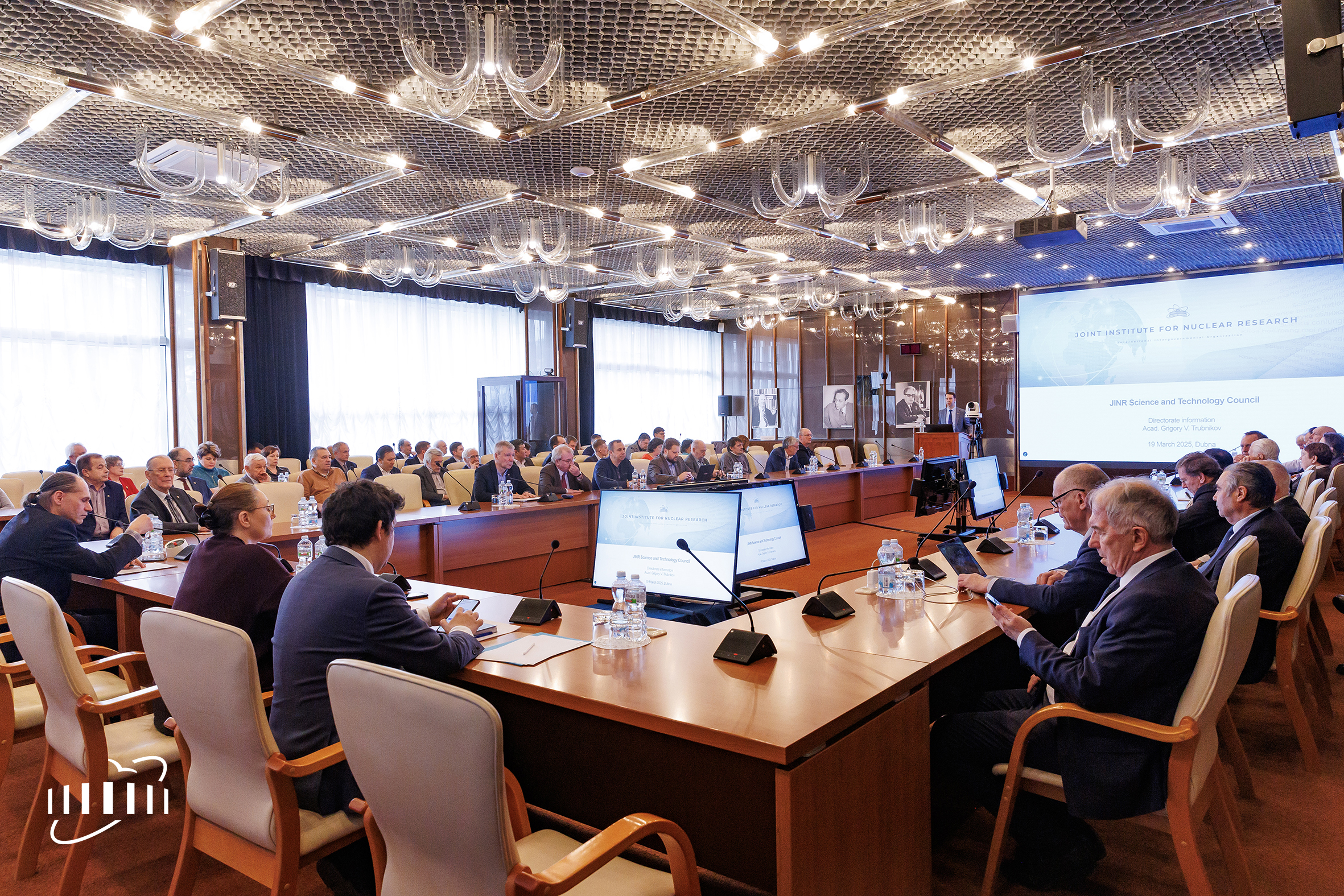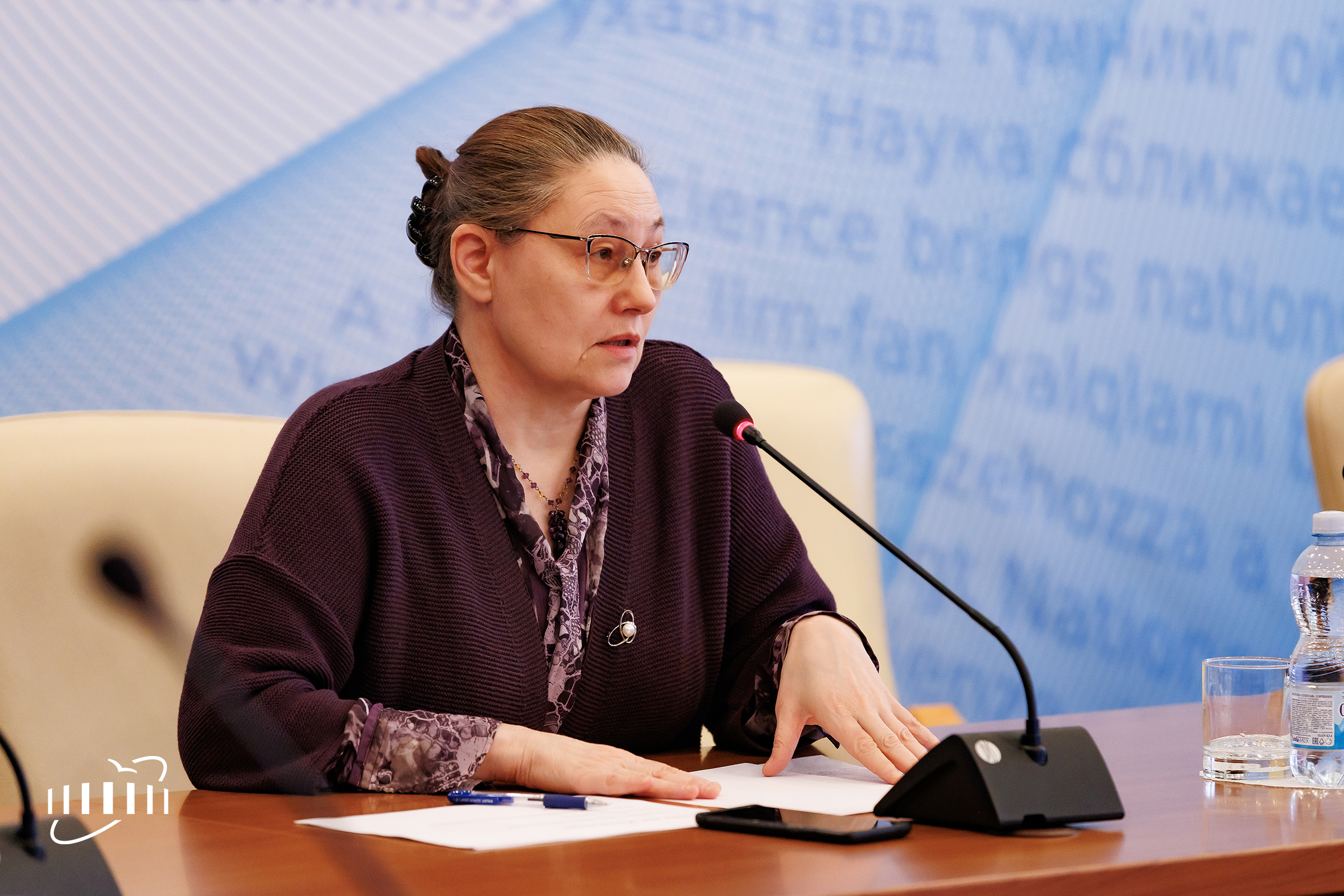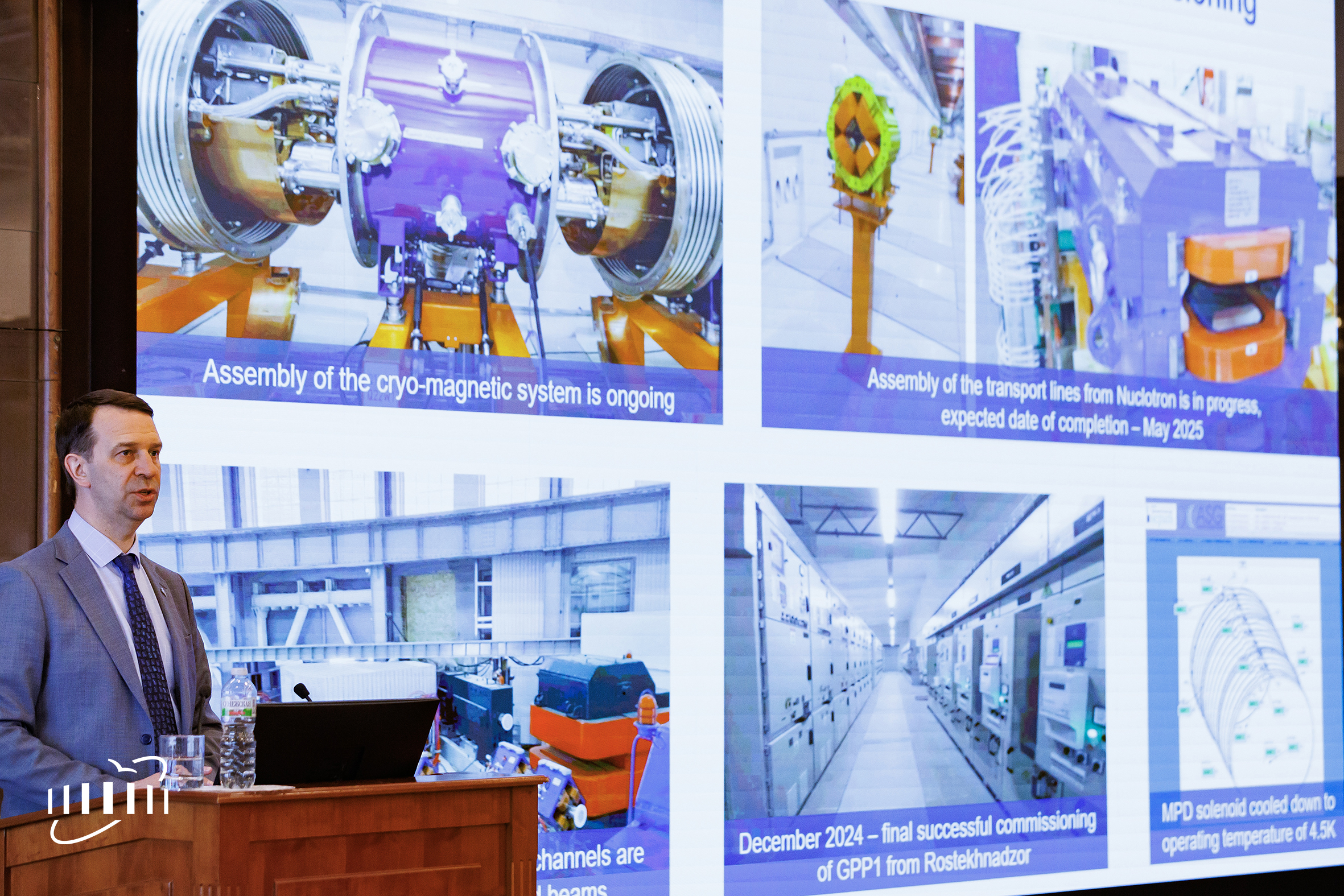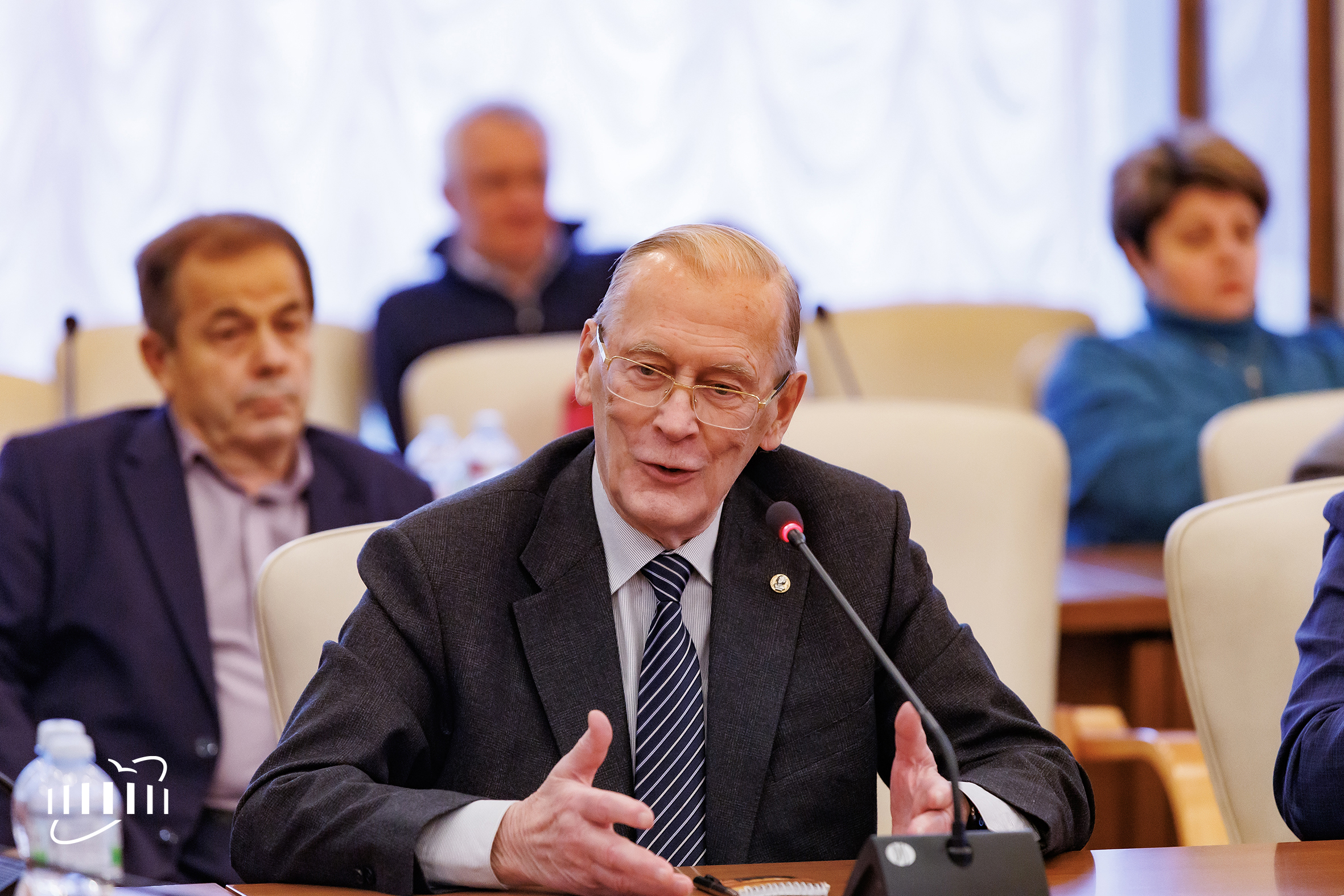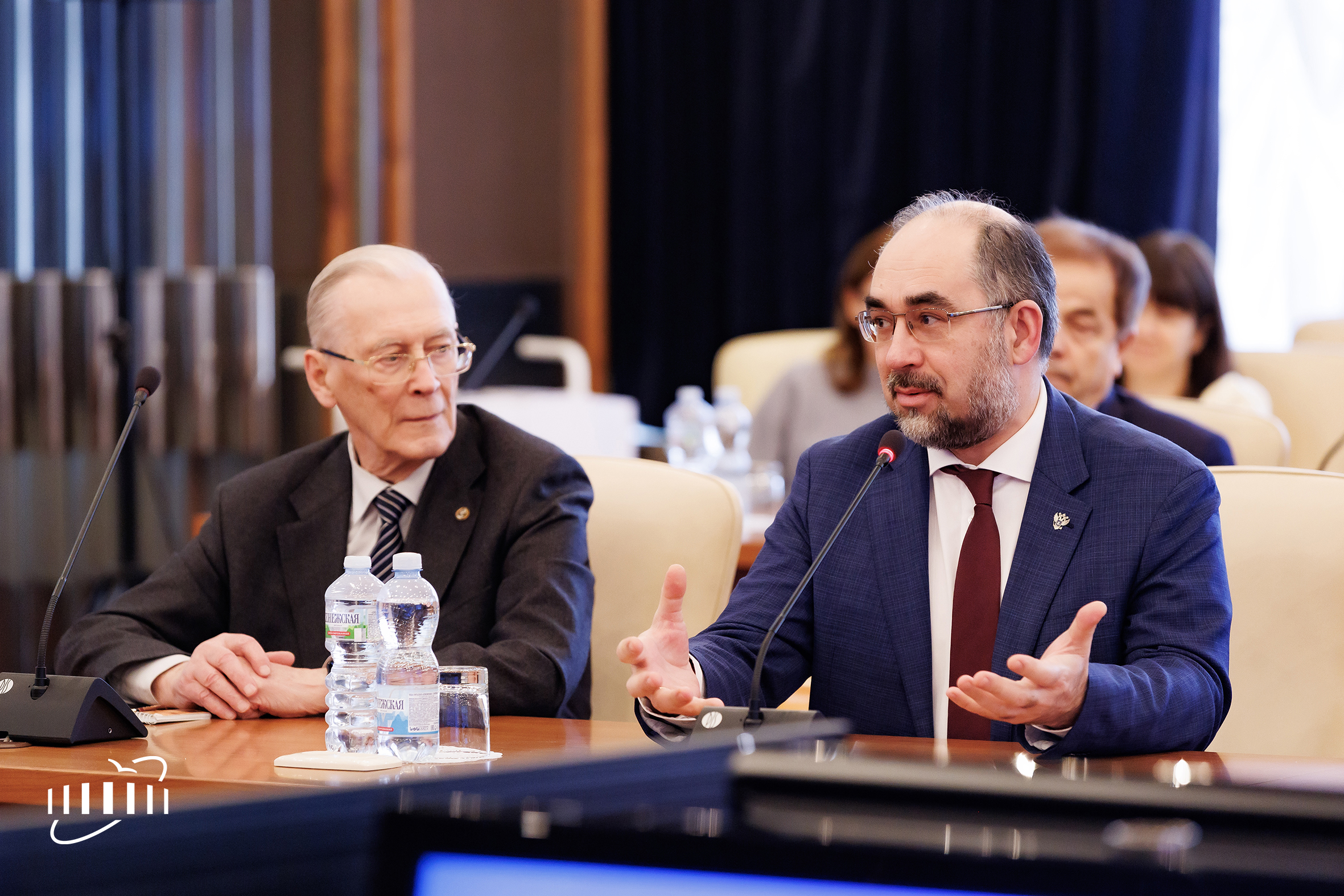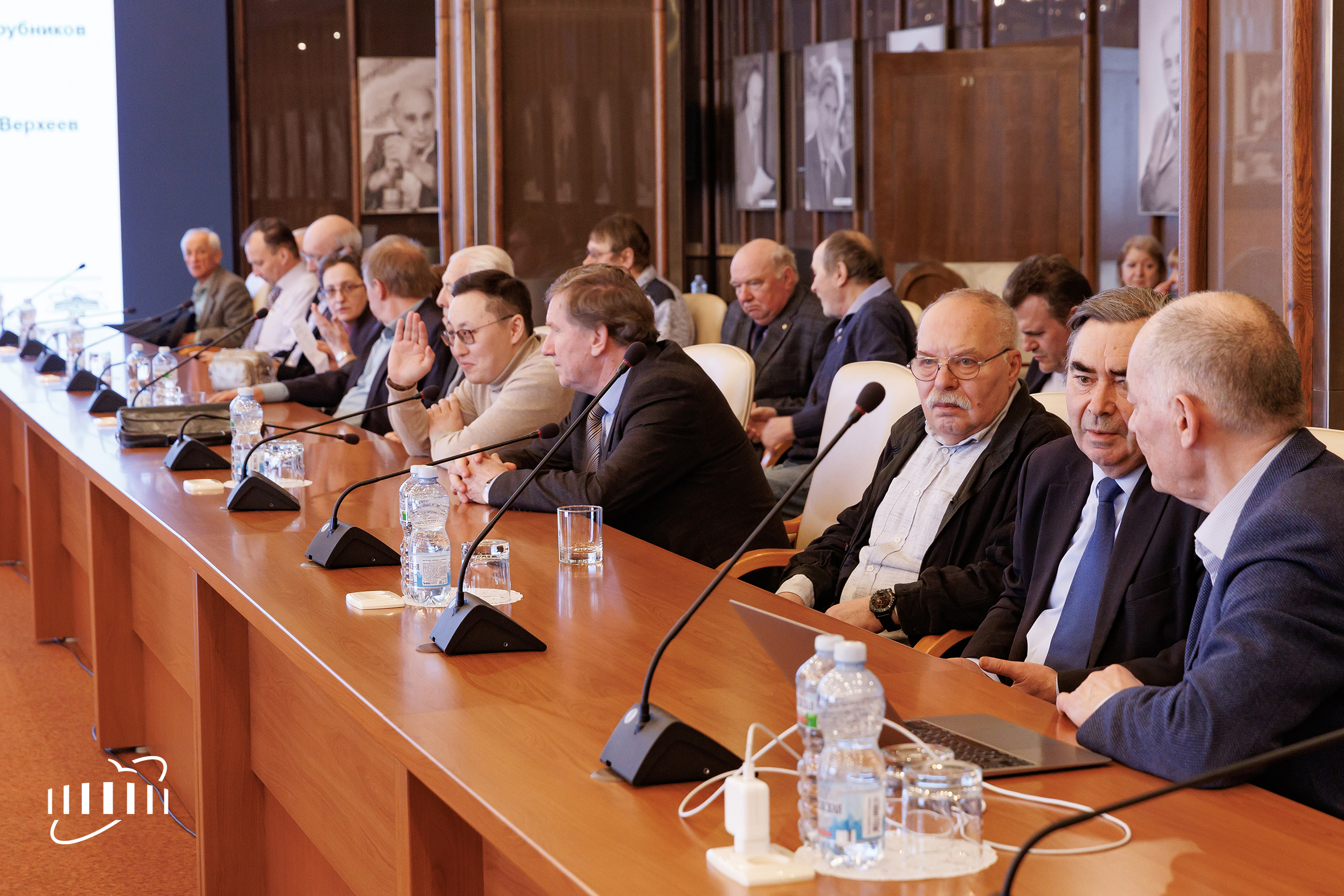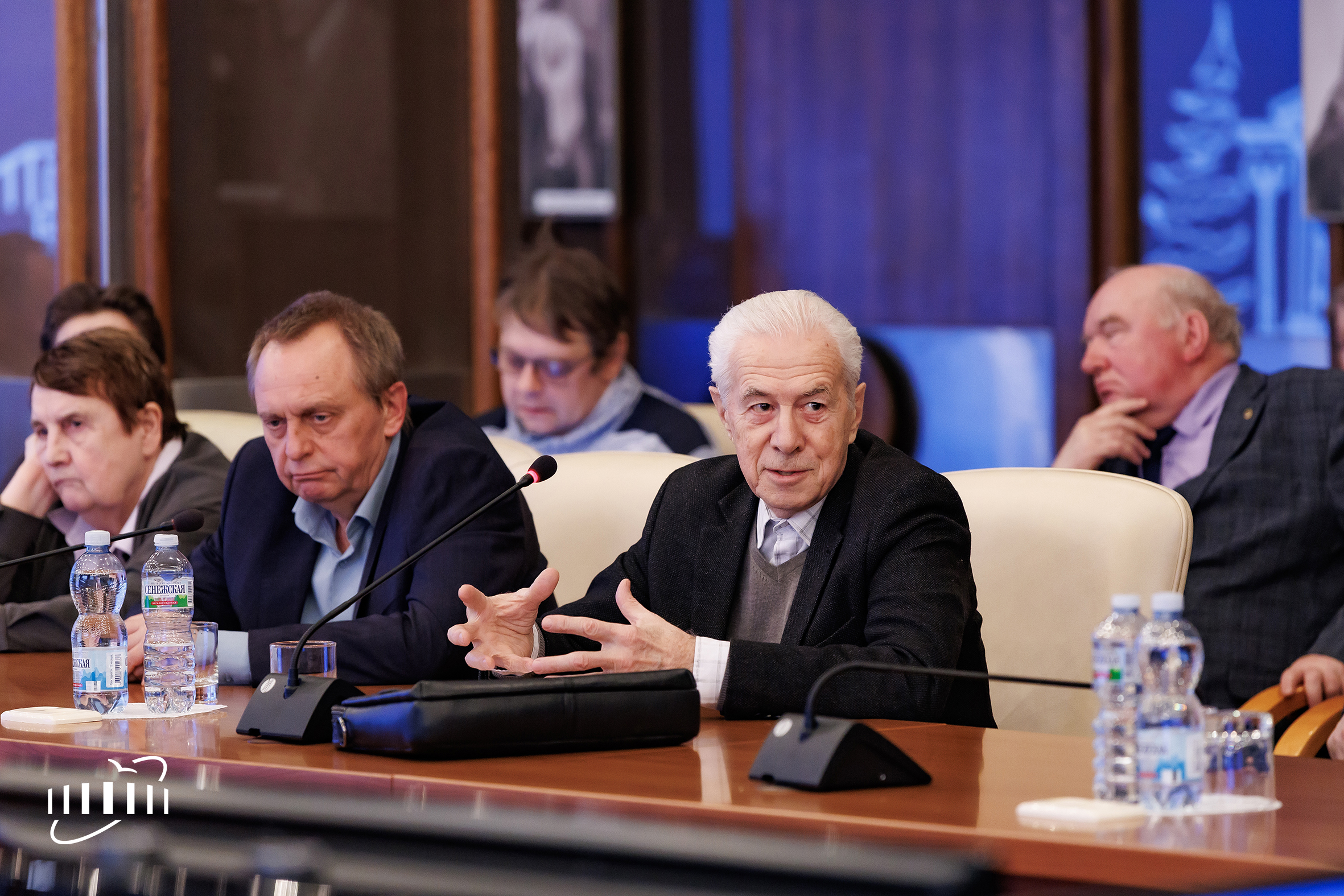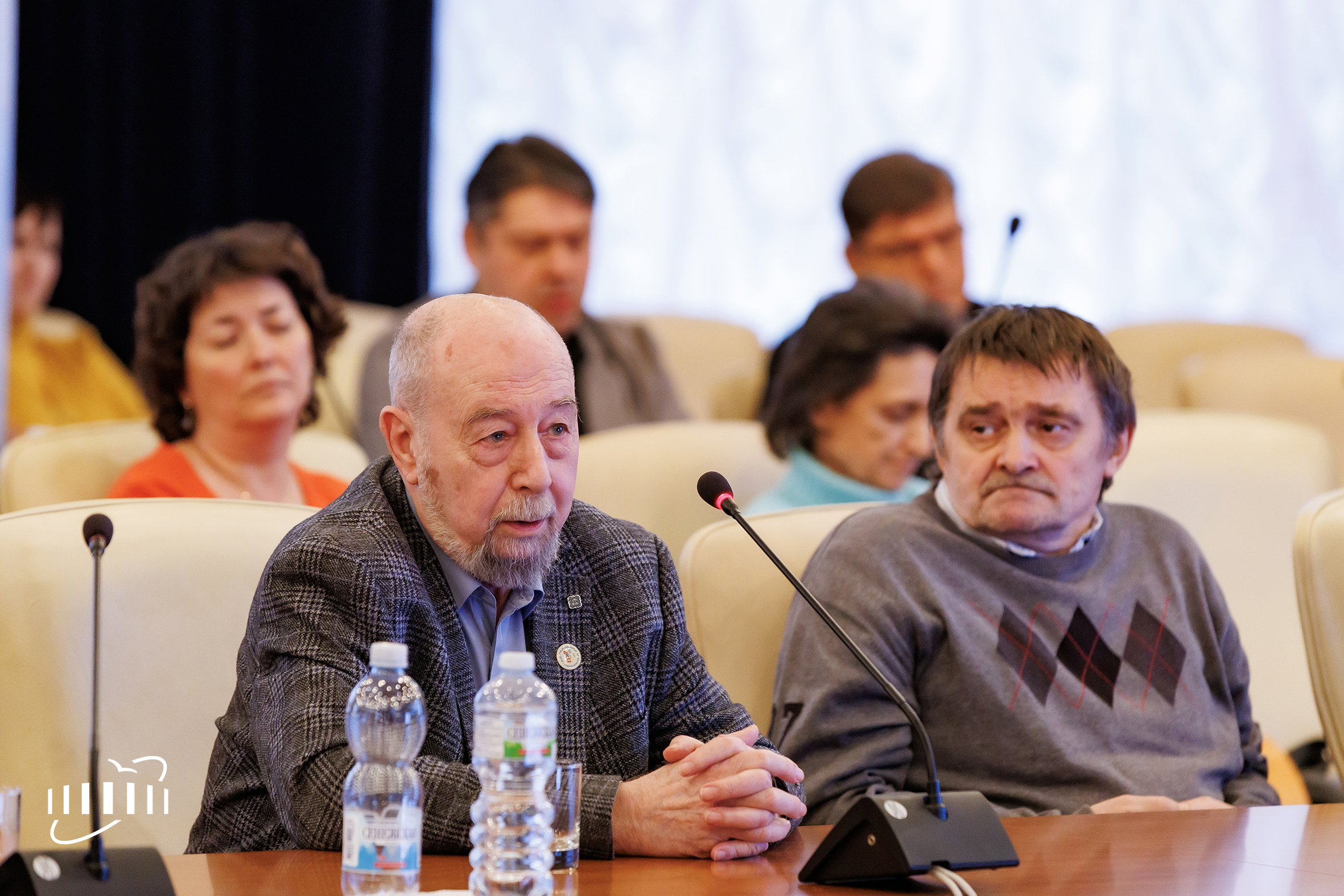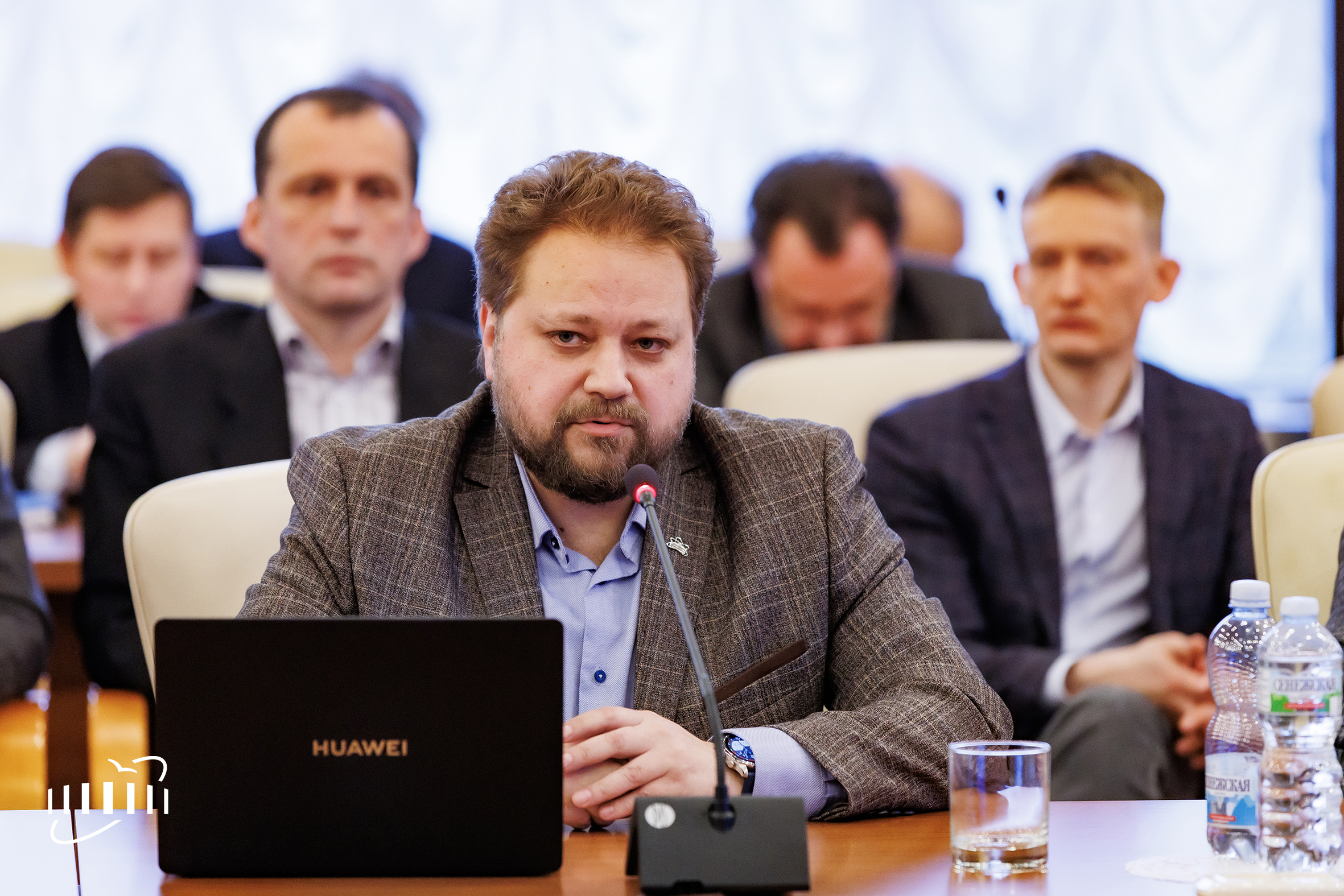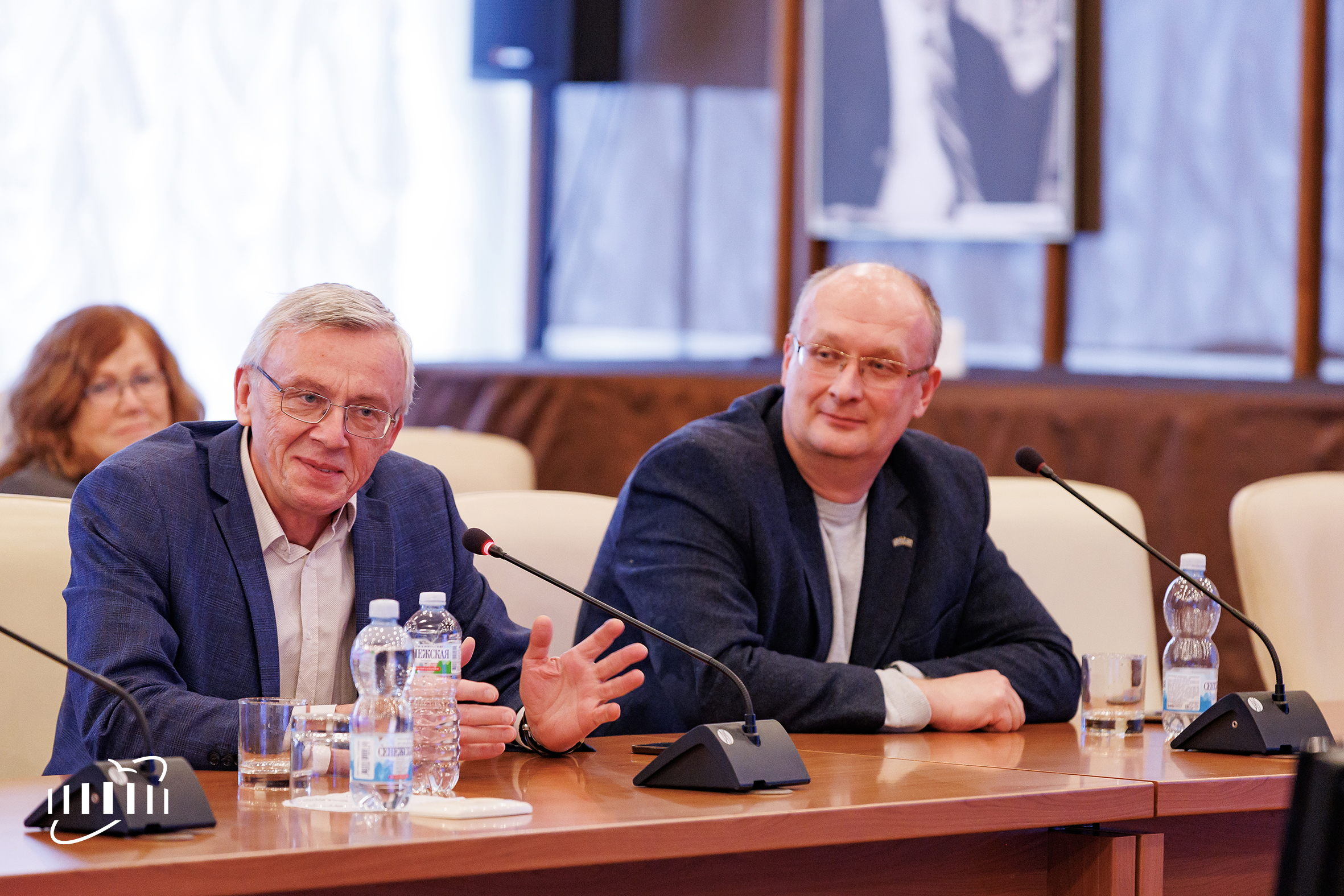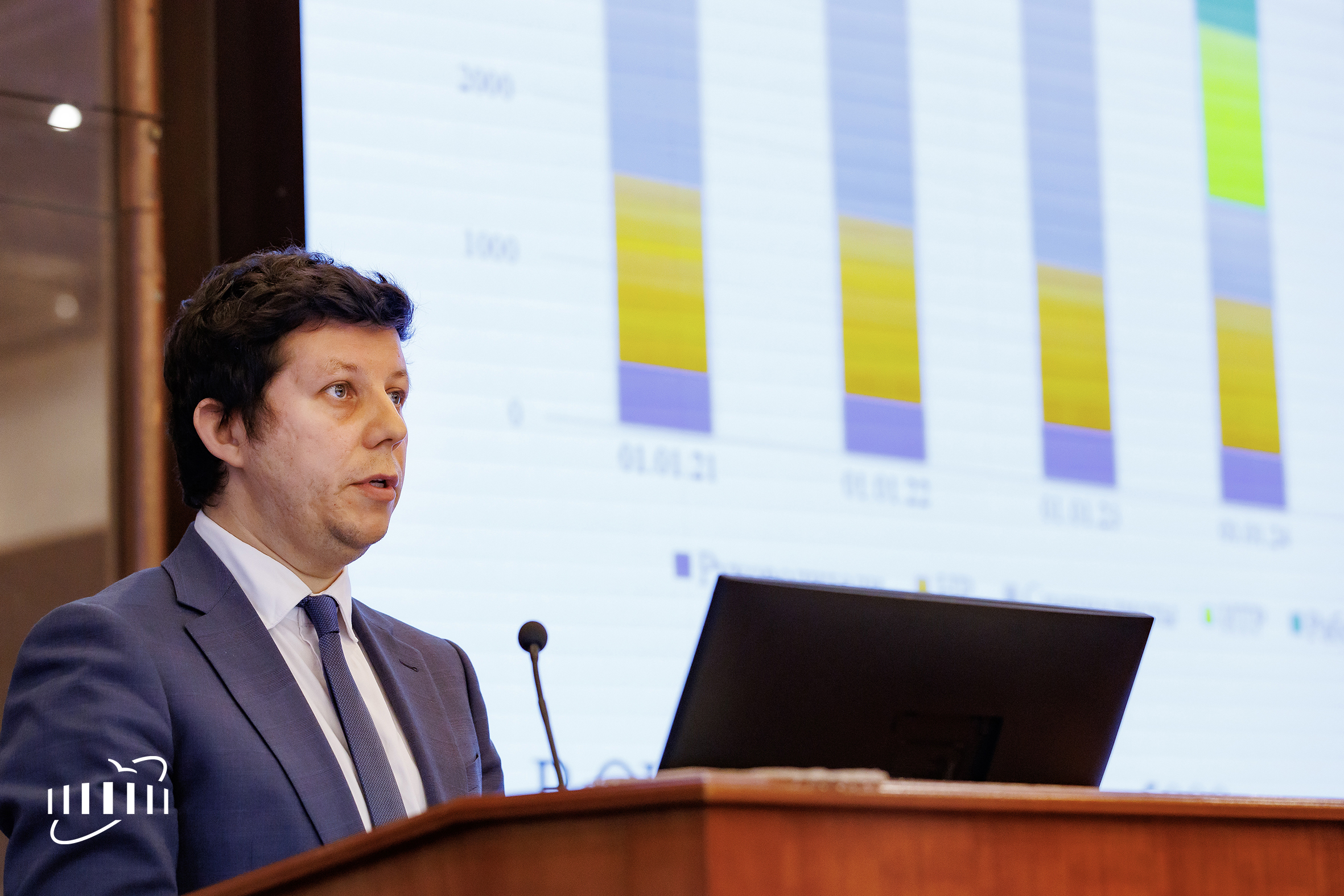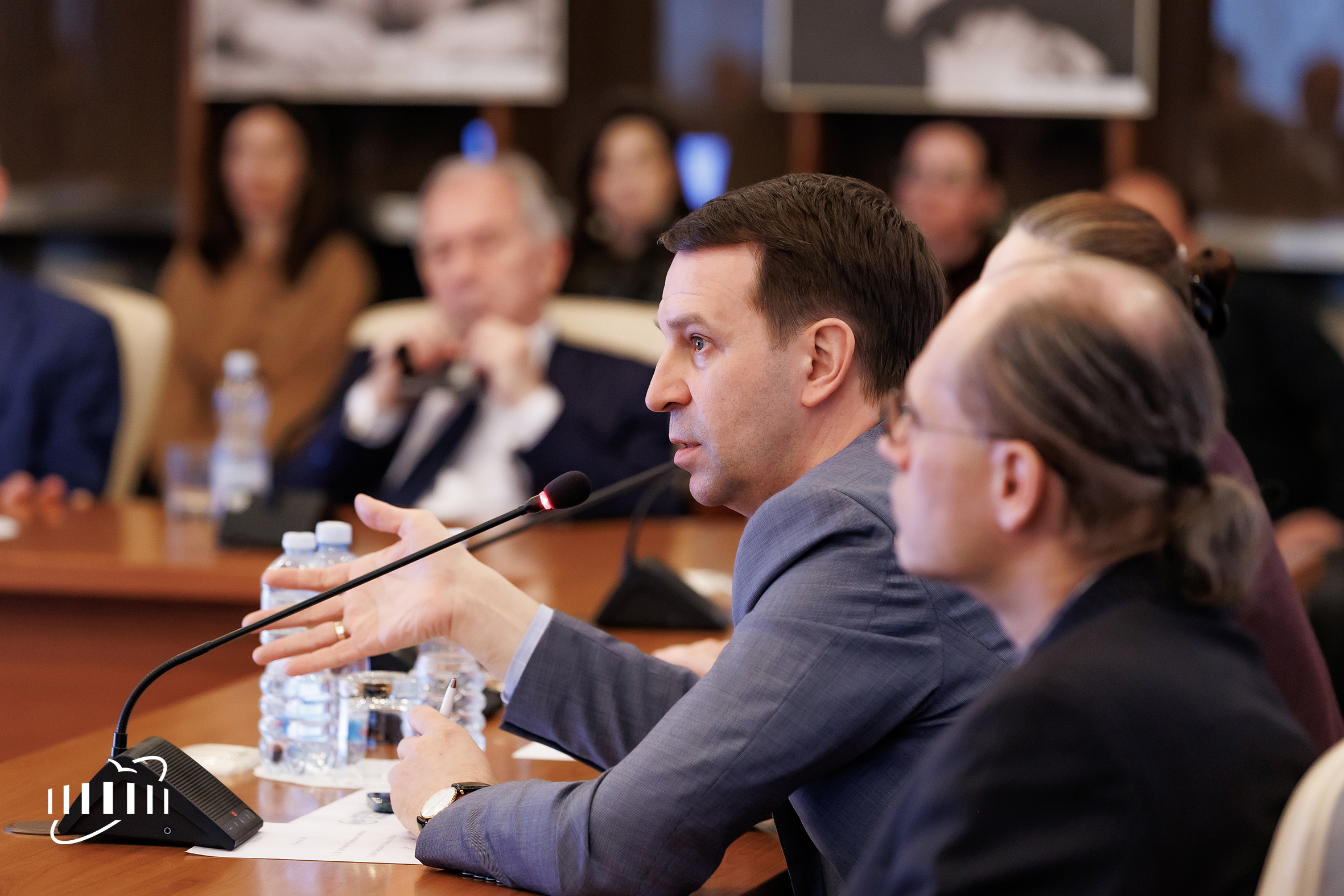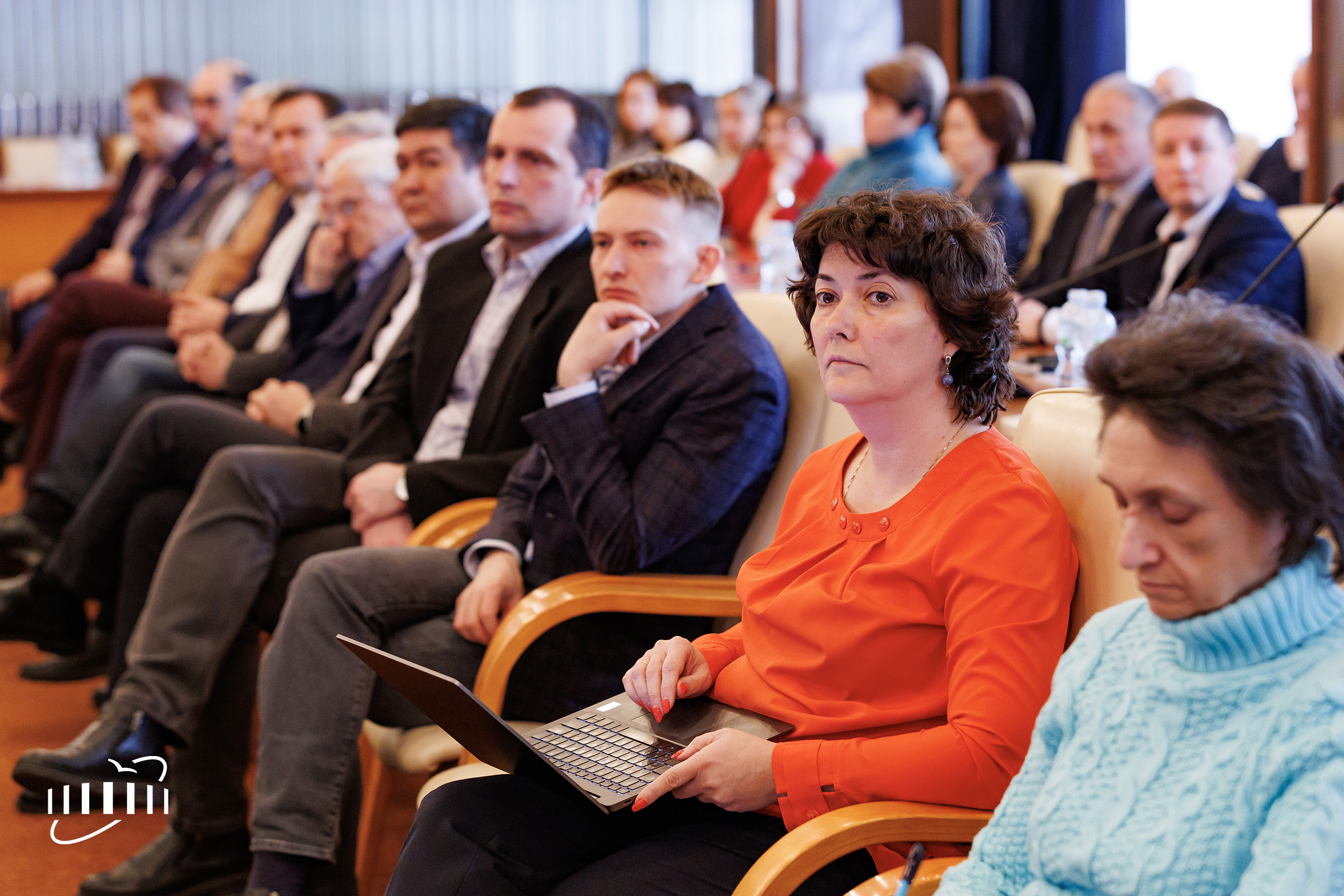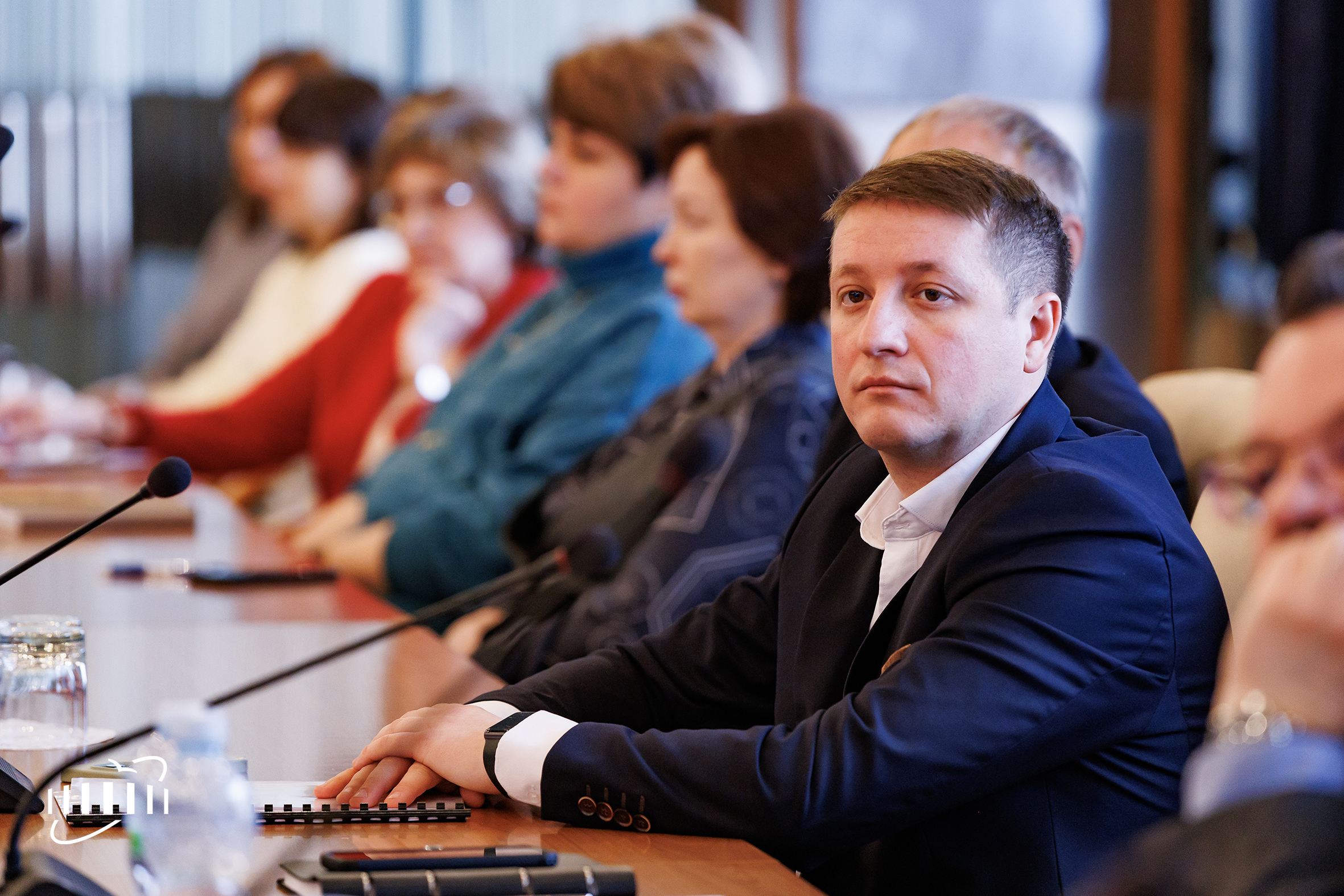JINR STC: attracting personnel at top of agenda
News, 24 March 2025
On 19 March, the JINR International Conference Centre hosted a meeting of the Science and Technology Council of the Joint Institute for Nuclear Research, chaired by Elena Kolganova. JINR Director, Academician of the Russian Academy of Sciences (RAS) Grigory Trubnikov gave a talk on behalf of the Institute’s Directorate. Head of the JINR Human Resources and Records Management Department Alexander Verkheev made a presentation on attracting personnel to the Institute.
The key event of recent weeks at the Joint Institute was operation resumption of the IBR-2 Research Pulsed Reactor at FLNP. The reactor’s stable functioning in various modes was demonstrated during a test cycle. A research cycle for JINR employees has started, and a session for external users is scheduled for October–December.
VBLHEP is actively preparing for the launch of the NICA Accelerator Complex. Specialists spent a month accelerating helium ions in the Booster and are now switching to xenon beams, which are set to be used for another few months. The collider is planned to be cooled in April and May. The MPD solenoid is being prepared for magnetic field measurements that will last several months. Assembly of the MPD Detector will begin in the autumn, and a full-scale scientific run at the collider is scheduled for the end of the year. In March, the NICA Coordination Committee approved a new schedule for the complex’s construction.
The Superheavy Element Factory at FLNR reached and even partially overrun its design parameters, while the number of recorded events increased 2.5–3 times. The target, injection complex, ion source, and cyclotron were modernised.
A commissioning run started at the LINAC-200 Electron Accelerator at DLNP. A large queue of users is waiting to conduct experiments at the facility.
On 17–18 March, the Baikal-GVD Neutrino Telescope 2025 workshop was held. The annual winter expedition to Lake Baikal is nearing completion. Employees involved in the project plan to install a new, 14th, telescope cluster, add two intercluster strings, and repair the first cluster. Inclement weather (thin ice on the lake) led to adjustments in the initial plans.
MLIT remains engaged in addressing the requirements of experiments conducted at JINR. The Tier-1 Centre holds the first place in the CMS Experiment data processing at CERN. On 18 March, the Laboratory hosted a seminar in honour of the 95th anniversary of the birth of one of its founders, Nikolay N. Govorun; an exhibition dedicated to the researcher is taking place at the Scientists’ Club.
LRB published papers on combined proton therapy with the addition of pharmaceutical preparations that promote effective repair of double-stranded DNA breaks and on the study of radiation-induced cognitive changes in mice. LRB, the International Cooperation Department, and the Institute’s services conducted the second NUMAR school in Cuba. This year, the list of Latin American countries participating in NUMAR expanded.
In the past year, BLTP hosted major international conferences and a meeting of the Scientific Session of Nuclear Physics Section of Physics Division of RAS, which took place in April. In November, the Institute of Theoretical Physics of the Chinese Academy of Sciences and BLTP JINR signed a cooperation agreement.
In February, after a 14-year pause, the JINR University Centre Council resumed its activities and discussed the UC development programme. In February, UC employees held the Teachers of the Future school for physics and mathematics students; Wave 12 of the student Interest programme is taking place.
At the end of December, the first issue of JINR’s new peer-reviewed online journal, Natural Science Review, was published. JINR’s innovation development competition started: applications are being collected and discussed at laboratories. In February, five scientists from Kazakhstan, Russia, and South Africa received the OGANESSON Prize.
The first meeting of the working group tasked with organizing the 70th JINR anniversary celebration in 2026 took place. “The main objective of the anniversary events is to actively attract scientists and specialists from the Member States and partner countries. To do this, we need to operate scientific facilities as efficiently as possible, involve as many collaborators as possible, and cooperate with scientific teams in these countries. The purpose of our major events, including those held at other sites rather than JINR, is to increase the Member States’ interest in the Institute,” Grigory Trubnikov summarised.
“2025 is a very important year for the Institute,” STC JINR Chair Elena Kolganova said. “On the one hand, this is when we prepare for the Institute’s anniversary, and we will pay special attention to this year’s events. On the other hand, this is the year the current JINR Directorate reports on the work done”. The upcoming CP session will include the Director’s talk summarising the Institute’s work over the past four years in the adverse circumstances of the COVID-19 pandemic and the impact of geopolitical turbulence on JINR’s employees, supplies, logistics, and, as a result, on scientific work. At the end of the year, a new JINR Directorate will be elected at the CP session.
In the discussion following JINR Director’s presentation, the participants noted that over the past few years, the Institute managed to create a bright and attractive image projected to society, especially to young people striving to work in science. The joint work of laboratories and national groups with the Institute’s Directorate was strengthened.
JINR Scientific Leader, RAS Academician Victor Matveev emphasised that changes in the Institute’s management system led to positive, harmonious development in all areas of scientific work and social life. “We are constantly analysing cooperation with the Member States and doing a lot to ensure its effectiveness. The Institute has clearly gained more authority and trust among the Member States and, above all, its country of residence,” Victor Matveev finished his speech.
Alexander Verkheev gave a talk on JINR’s personnel and age composition, vacancies, and sources of recruiting young employees.
Currently, the Institute employs more than 5000 people. 2500 of them are researchers and engineers, 2100 are manual workers and specialists. Over the past five years, the number of employees has reduced, and this trend continues today. There are 150 manual workers, 130 engineers, and 25 scientists fewer than there were in 2021. “Based on the total employee turnover for 40 years, we need to annually attract at least 60 researchers and engineers and about 50 manual workers and specialists to the Institute,” Alexander Verkheev stressed. Laboratories primarily require engineers and, secondly, qualified manual workers.
JINR’s scientific programme attracts young scientists and students, most of whom stay to work at the Institute. In 2022-24, one hundred people graduated, got a job at the laboratories, and stayed; 76% of them completed UC internships. The main sources of personnel influx are Dubna State University, Moscow Engineering Physics Institute, Moscow State University, Tomsk Polytechnic University, Moscow Institute of Physics and Technology, Kazan Federal University, and other universities, mostly the JINR-based departments at these universities.
The number of Institute’s employees aged 35 to 60 is growing, which leads to a slight decrease in the average age of researchers. The proportion of employees over 60 remains stable at about a third of the workforce. The average age is 53.4 years for researchers, 48.1 for research engineers, and 55.4 for manual workers.
Young specialists come to work at JINR as master’s and postgraduate students, participants of specialised Postdoc and Fellowship Programmes, Russian universities’ graduates, as well as through nominations from plenipotentiary representatives of the JINR Member States. In 2022-23, the number of referrals by plenipotentiaries significantly reduced, but has now grown. Last year, there was an increase in the number of employees from Egypt and Vietnam, and this year, more employees are expected to come from Vietnam and Mongolia.
A personnel development team was formed within the Human Resources and Records Management Department at JINR responsible for posting information about vacancies, searching for candidates, organizing and conducting interviews. The team participates in career forums and job fairs and establishes contacts with career centres of secondary and higher educational institutions of Russian regions.
There is currently a competition with Dubna enterprises for Russian university students, engineering personnel, and highly qualified workers. In addition, with the planned increase in the workforce, the laboratories’ leaders face the task of creating new positions.
The presentation resulted in a lengthy discussion. The participants suggested fostering interaction with university students starting from the early years of their studies. IT schools at MLIT were considered as an example of a “ladder” leading to JINR. The need to develop financial support tools for supervisors, who are the main link between the Institute and its new young employees, was noted. Modern housing in the JINR hometown is required as well.
“We are Russia’s largest scientific organization situated in one place. At the same time, the Joint Institute has a special status and should continue developing as an international intergovernmental organization. We have now reached a milestone at which we have the opportunity to build large scientific facilities and laboratories in the Member States. This will definitely help with the lack of personnel, as it already did in the Institute’s history, both in the 60s-80s and in the 2000s in Kazakhstan. In the near future, the Institute is planning to actively participate in the construction of facilities in Vietnam,” Grigory Trubnikov concluded.
